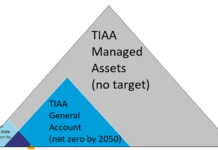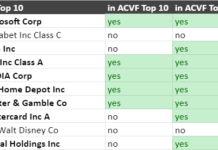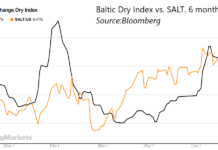Investing in green energy can be good for both the climate and your wallet. How good depends on choosing the right investment vehicles (mutual funds, ETFs, or stocks) and sectors to invest in. This will get you started.
More and more investors are investing in green energy. According to the Cleantech Group, the Cleantech sector is now the largest sector for venture capital investment. Green Energy is not just for venture capitalists. Small investors have done well in 2009. Since the market bottomed at the start of March, the average green energy mutual fund topped the S&P 500 by 13%, while the average clean energy ETF beat the S&P 500 by 18%.
Knowledgeable investors will scoff at that last statistic because, of course, most green energy companies are riskier than the tried-and-true companies of the S&P500, and what out-performs in an up market will under-perform in a down market. That is true, but only to a point. When I investigated it this Spring, I found that green energy stocks had outperformed the rest of the market even on a risk-adjusted basis.
Nor are all green energy companies risky. While the sector has more than its share of profitless startups, there are also established companies which have been making the planet a greener and safer place for a long time, but now have the opportunity to benefit from rising public awareness of the need to do something about climate change. By knowing what to look for, an investor can be green without taking on excessive risk.
Stocks, Exchange Traded Funds, or Mutual Funds
The small investor has three basic options:
-
Individual Green Energy Stocks.
Green Energy Mutual Funds
Mutual funds will be the most familiar option to the small investor. The available green energy mutual funds are all actively managed, which means they try to choose the best green companies. Mutual funds charge high fees for this service, but I have been unable to find evidence of skill among green mutual fund managers which would justify the cost. Numerous studies of the mutual fund industry also find that manager skill is very rare and difficult to distinguish from (much more common) manager luck. Green mutual funds are not the best way to gain exposure to the sector: even compared to most actively managed mutual funds, the green energy mutual funds are quite expensive, and so they make sense only for investors who have no other option.
I took an in-depth look at the available green energy mutual funds here.
Green Energy ETFs
The second option is green energy Exchange Traded Funds, or ETFs. ETFs are like mutual funds in that they allow an investor to own small stakes in a large number of companies with a single investment, but, unlike mutual funds, they do not have managers who try to pick the best investments. Instead, their goal is to gain exposure to a wide range of green energy companies by buying the companies in an industry index. Investors buy ETFs from other investors on a stock exchange, much like they would by individual stocks; the ETF manager seldom deals directly with individual investors. This hand-off approach means that they can charge investors much smaller fees for their services. Furthermore, since there is little evidence that active mutual fund managers add value, the ETF investor benefits from cost savings, but probably does not lose any benefit from active management.
ETFs are an appropriate investing strategy for a hands-off investor with a few thousand dollars or more to invest. I published an in-depth look at the available green energy ETFs here, which includes recommendations of the best ETFs for different types of investors.
Green Energy Stocks
The final option is investing in green energy stocks. This can deliver significant cost savings relative to investing in green ETFs (and almost certainly will deliver cost savings relative to mutual funds), but typically requires considerably more investment of time than does using the green ETFs. This must be weighed against the additional work required to select individual stocks instead of ETFs, but carries the advantage of access to green energy sectors which the mutual funds and ETFs neglect, better control of both sector and stock selection..
In order to give readers a relatively simple option to invest in green energy stocks without a lot of work, I have published a list of 10 stocks on January 1st for the last two years. My ten green stocks for 2008 lost 55% that year, but this was still better than all the ETFs and all but one of the mutual funds in 2008. Most of these lost between 60% and 70% of their value in 2008. In the first three quarters of 2009, my ten picks returned 41.5%, handily beating the green ETF I chose as a benchmark (by 20%). (I have not looked into the performance of all the ETFs over the same period.) As with mutual fund managers, it’s impossible to say if my 1 3/4 year track record is skill or luck, but at least the costs are low.
I’ll publish a new list of ten on AltEnergyStocks.com at the start of 2010.
Four Articles on Sector and Stock Selection
No matter which investment vehicle you use, understanding a little about the clean energy sectors can lead to a stronger, safer, and more profitable portfolio. It can also lead to a greener portfolio, in the environmental sense of the word.
I’ve published a series of articles to help investors make the right decisions. Two are based on research into which technologies would be most effective against climate change. The first looked into those technologies which would have a significant impact on climate change, and the second looked into those technologies which were not going to make significant contributions. I believe it makes sense to structure your portfolio to reflect the technologies which are actually going to make a difference.&
nbsp; People who want to do the right thing will know that the companies they own are doing the right thing about climate change. People who want to make money will know that rational investments to fight climate change will also benefit the companies they have invested in.
The third article looked at the types of questions investors should ask when selecting stocks or sectors, as part of a basic framework for investment decision-making. We are currently inundated with information about companies, but most of it is useless when trying to predict stock returns, because it is already reflected in market prices. Knowing the difference between useful information and useless information can dramatically reduce research time and lead to better decision-making.
The final article in this series looked at psychological factors which can lead incautious investors to invest unwisely, and how investors who are aware of this tendency can do better. The article also includes a list of twenty green energy stocks and sector ETFs that I think have the best prospects in their sectors.
Stock Selection Shortcuts
Individual stock selection is also more complex than selecting a few companies from stock lists, even my lists. Selecting stocks requires a level of due diligence when looking into each company. However, for investors who would like a shortcut and don’t want to use my lists, another trick would be to choose stocks from the portfolios of the green mutual funds to match your intended sector allocation. Even if we can’t be sure that the mutual fund managers are good at stock picking, we can be fairly confident that they have looked into the companies in their portfolios and avoided the obvious scams.
I tried such an approach by using stocks from the mutual funds’ portfolios when I constructed my Quick Clean Energy Tracking Portfolio earlier this year. The purpose then was not to outperform the mutual funds by better sector selection, but instead to match their performance at lower cost. It didn’t work out that way. The portfolio vastly out-performed, which turned out to be due in large part to an unexpected bias towards riskier stocks than those in the funds, in combination with a strong upward trend for the overall market over the period in question.
Even though that particular experiment did not work, the portfolios of the green energy mutual funds and ETFs are good places to start when selecting green stocks, and I will continue to do so myself.
For investors following the mutual fund or ETF routes to green portfolios, I give breakdowns by sector of each fund’s portfolio in the linked articles on Green Energy Mutual Funds and Green Energy ETFs.
Part II of this series will attempt to help you decide how much to invest in green energy. (Link will be broken until publication.)
DISCLOSURE: None.
DISCLAIMER: The information and trades provided here and in the comments are for informational purposes only and are not a solicitation to buy or sell any of these securities. Investing involves substantial risk and you should evaluate your own risk levels before you make any investment. Past results are not an indication of future performance. Please take the time to read the full disclaimer here.








